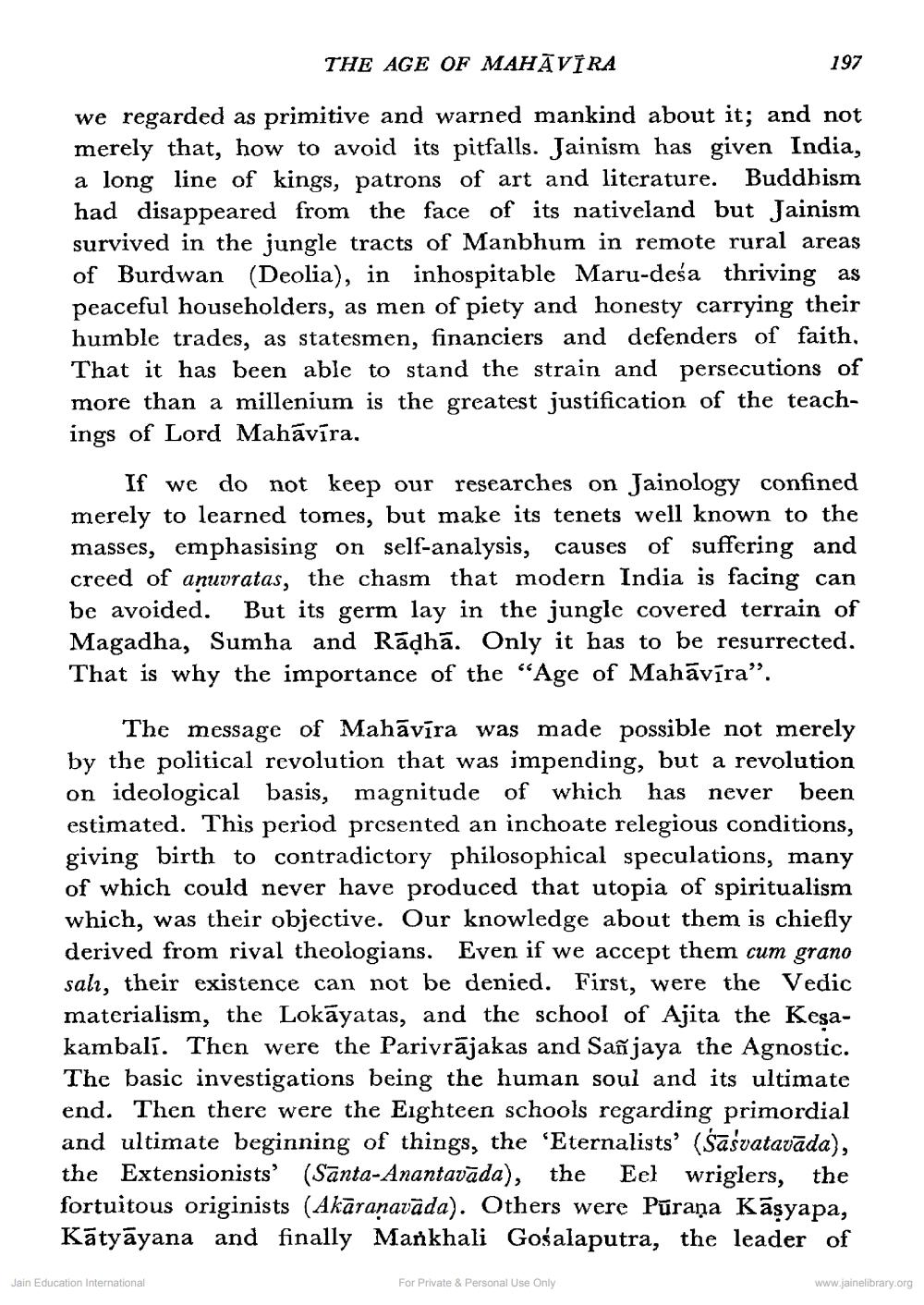________________
THE AGE OF MAHĀVĪRA
197 we regarded as primitive and warned mankind about it; and not merely that, how to avoid its pitfalls. Jainism has given India, a long line of kings, patrons of art and literature. Buddhism had disappeared from the face of its nativeland but Jainism survived in the jungle tracts of Manbhum in remote rural areas of Burdwan (Deolia), in inhospitable Maru-deśa thriving as peaceful householders, as men of piety and honesty carrying their humble trades, as statesmen, financiers and defenders of faith. That it has been able to stand the strain and persecutions of more than a millenium is the greatest justification of the teachings of Lord Mahāvīra,
If we do not keep our researches on Jainology confined merely to learned tomes, but make its tenets well known to the masses, emphasising on self-analysis, causes of suffering and creed of anuvratas, the chasm that modern India is facing can be avoided. But its germ lay in the jungle covered terrain of Magadha, Sumha and Rādhā. Only it has to be resurrected. That is why the importance of the "Age of Mahāvīra”.
The message of Mahāvīra was made possible not merely by the political revolution that was impending, but a revolution on ideological basis, magnitude of which has never been estimated. This period presented an inchoate relegious conditions, giving birth to contradictory philosophical speculations, many of which could never have produced that utopia of spiritualism which, was their objective. Our knowledge about them is chiefly derived from rival theologians. Even if we accept them cum grano salı, their existence can not be denied. First, were the Vedic materialism, the Lokāyatas, and the school of Ajita the Kesakambali. Then were the Parivrājakas and Sañjaya the Agnostic. The basic investigations being the human soul and its ultimate end. Then there were the Eighteen schools regarding primordial and ultimate beginning of things, the 'Eternalists' (šasvatavāda), the Extensionists' (Santa-Anantavāda), the Eel wriglers, the fortuitous originists (Akāranavāda). Others were Pūraņa Kāsyapa, Kātyāyana and finally Mankhali Gośalaputra, the leader of
Jain Education International
For Private & Personal Use Only
www.jainelibrary.org




